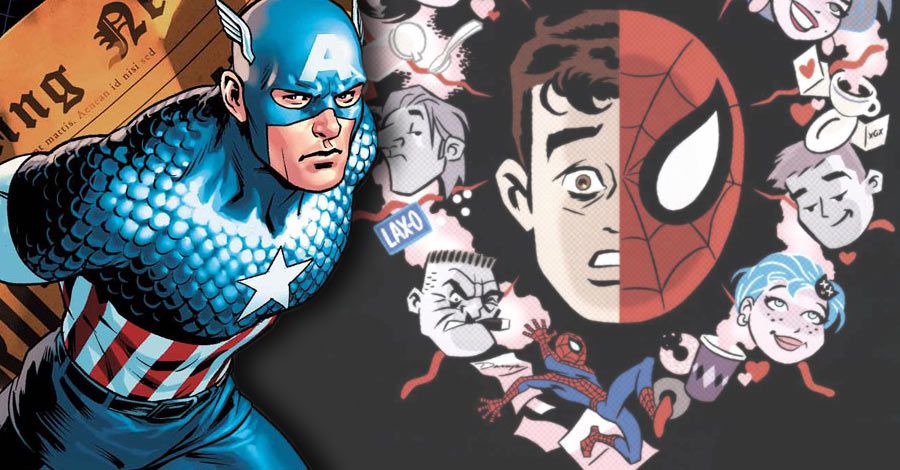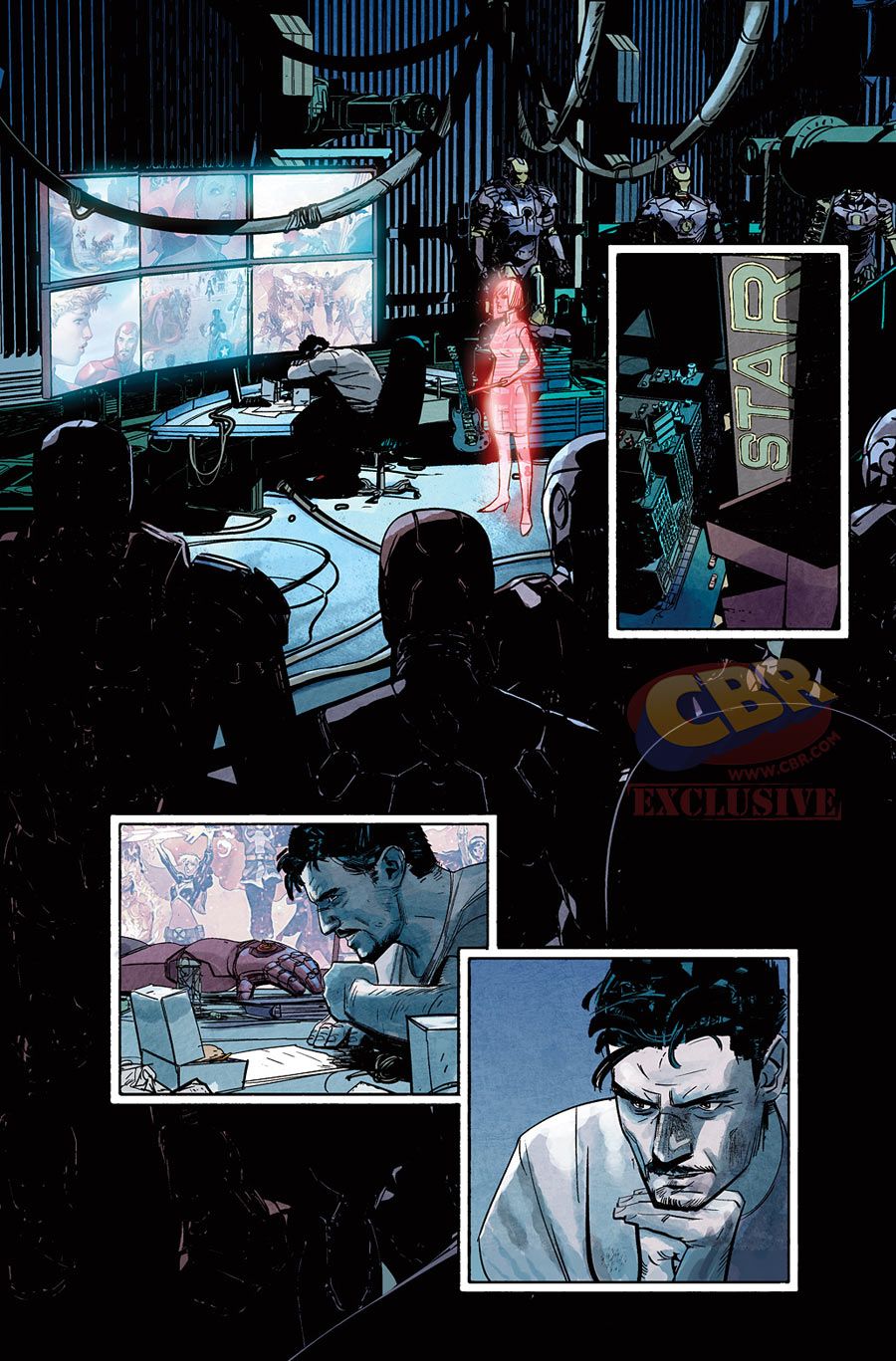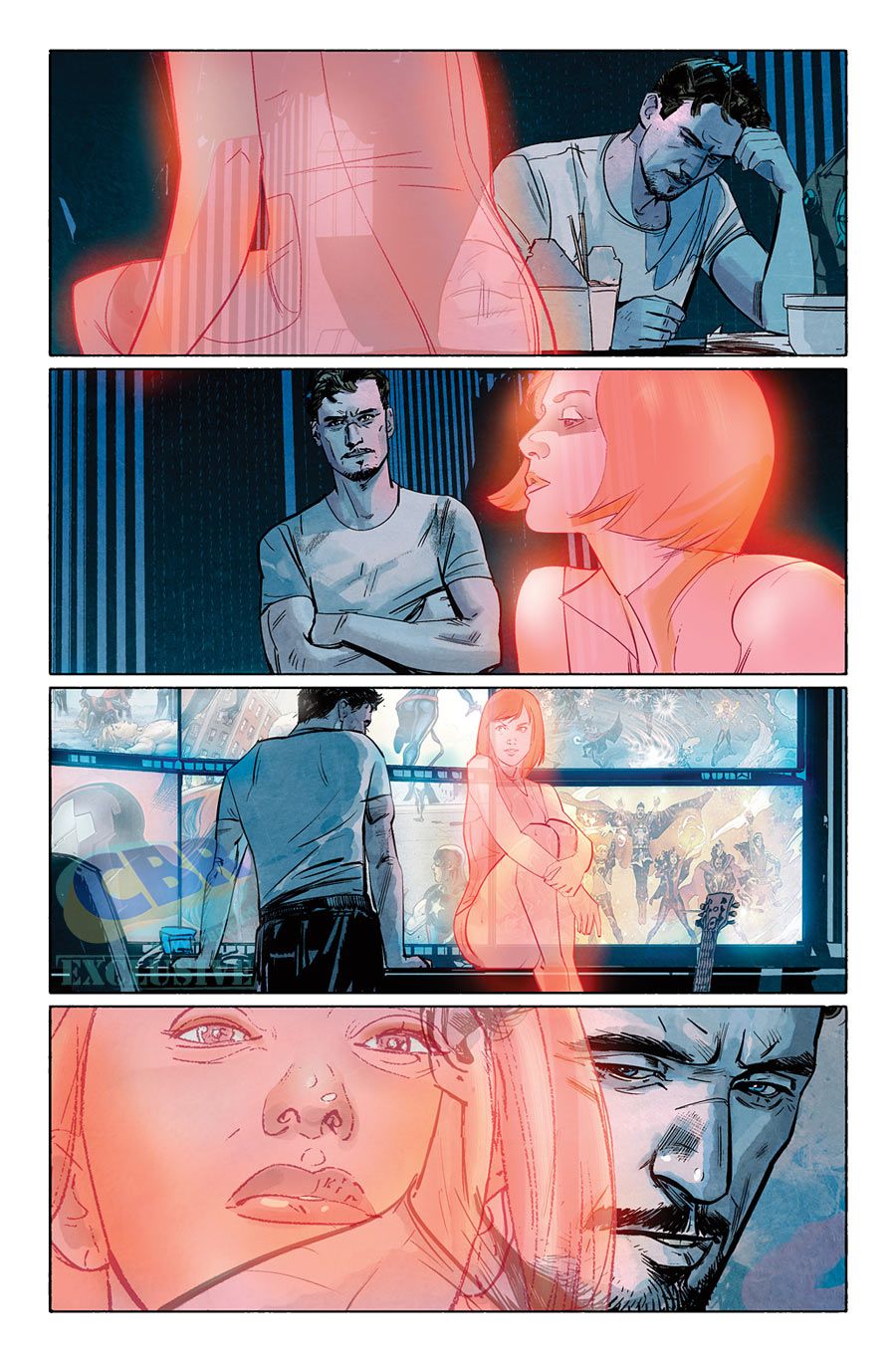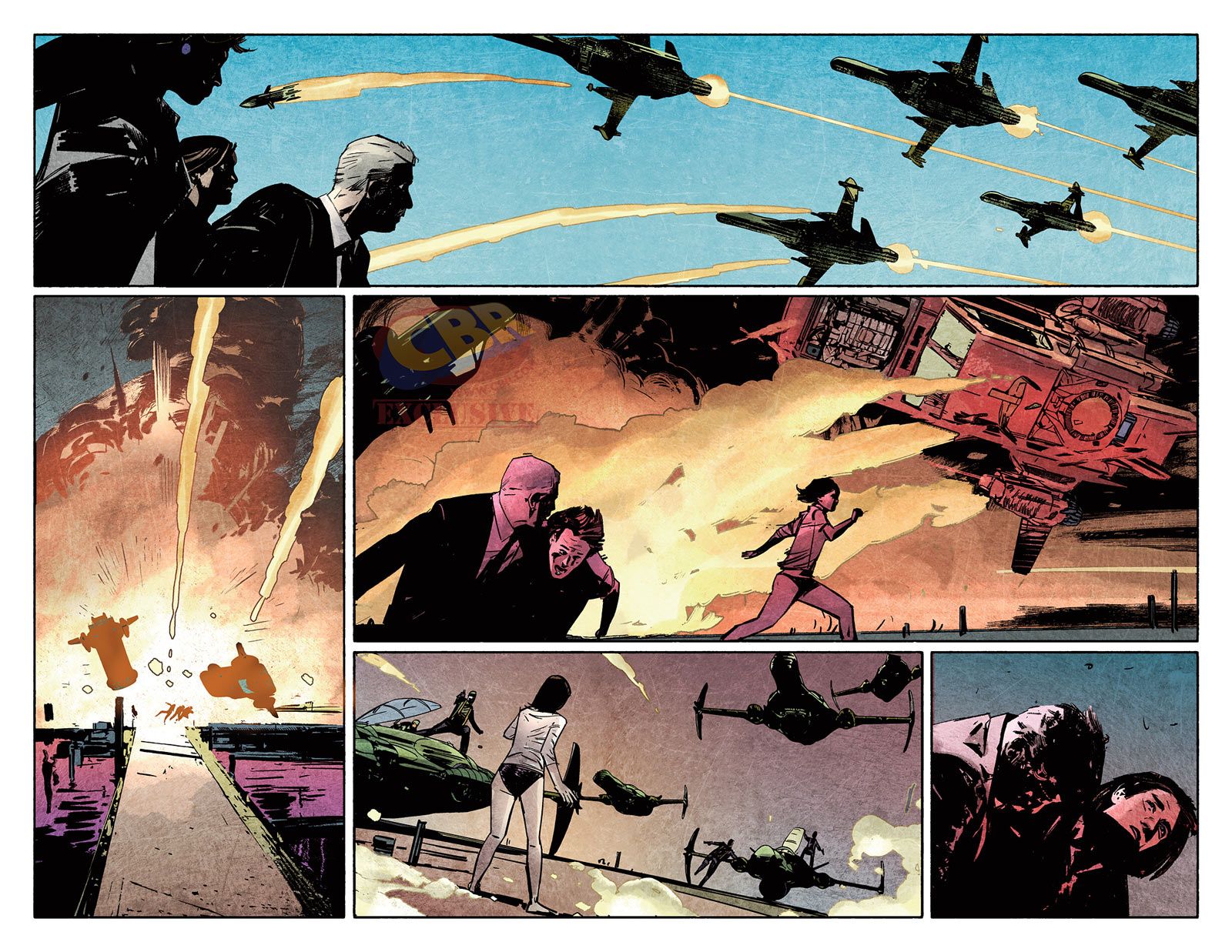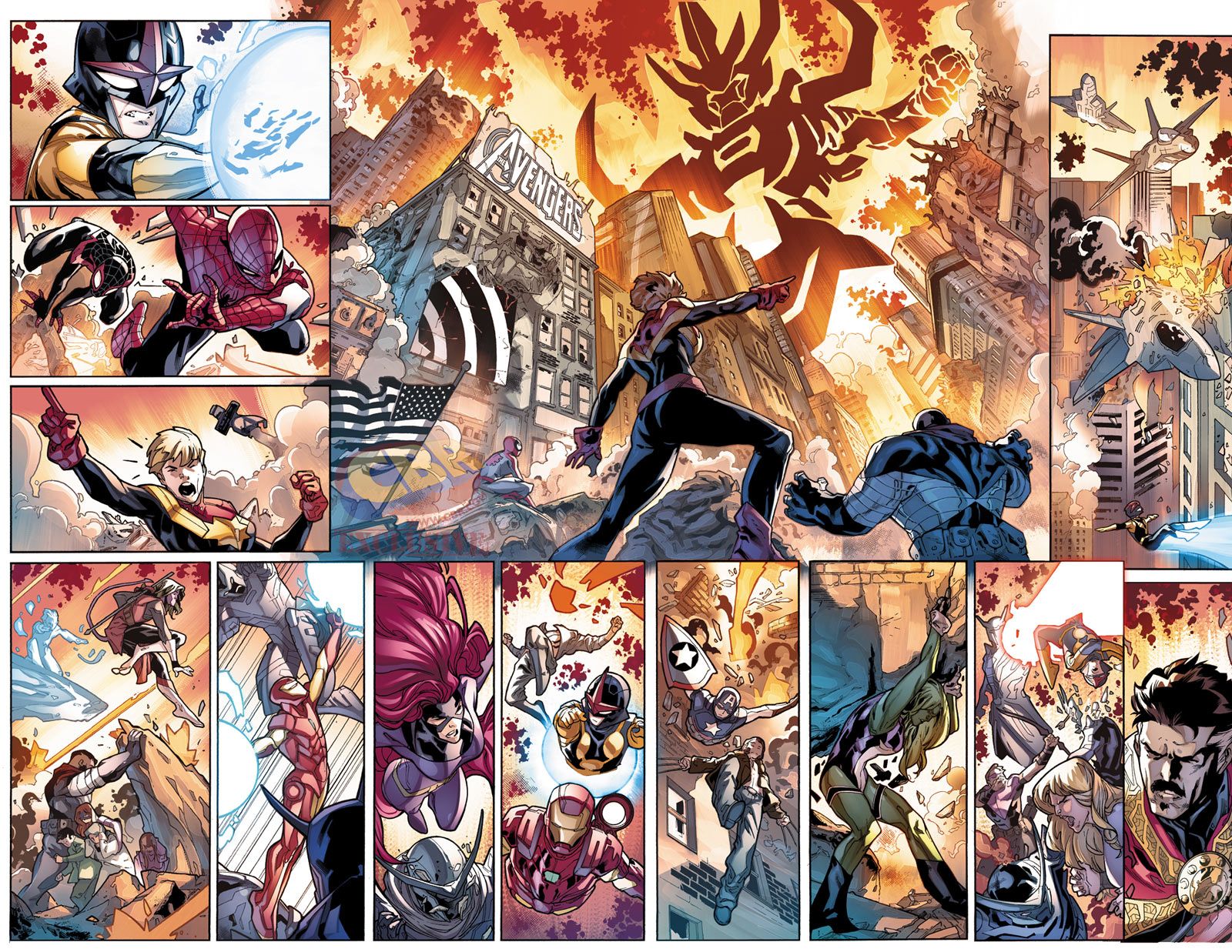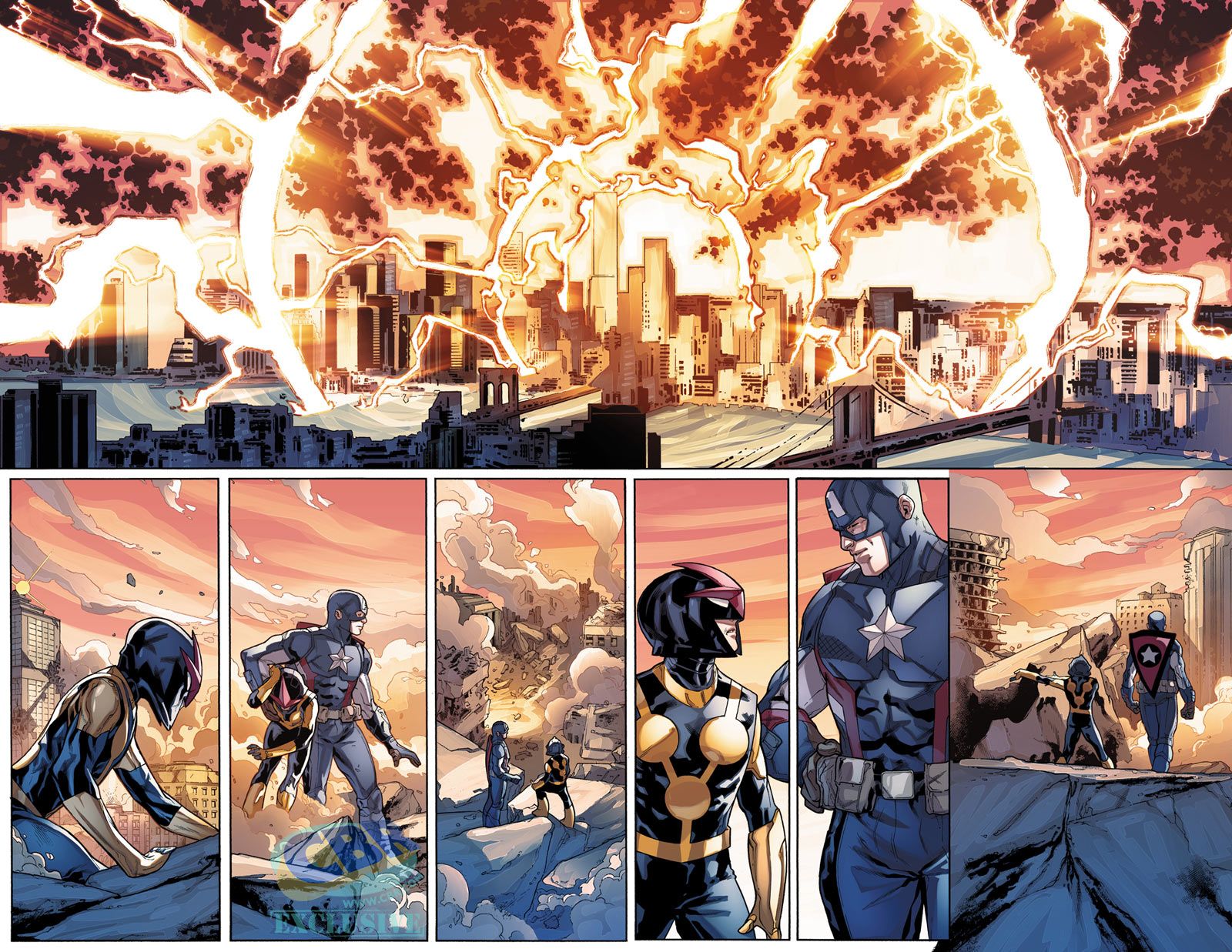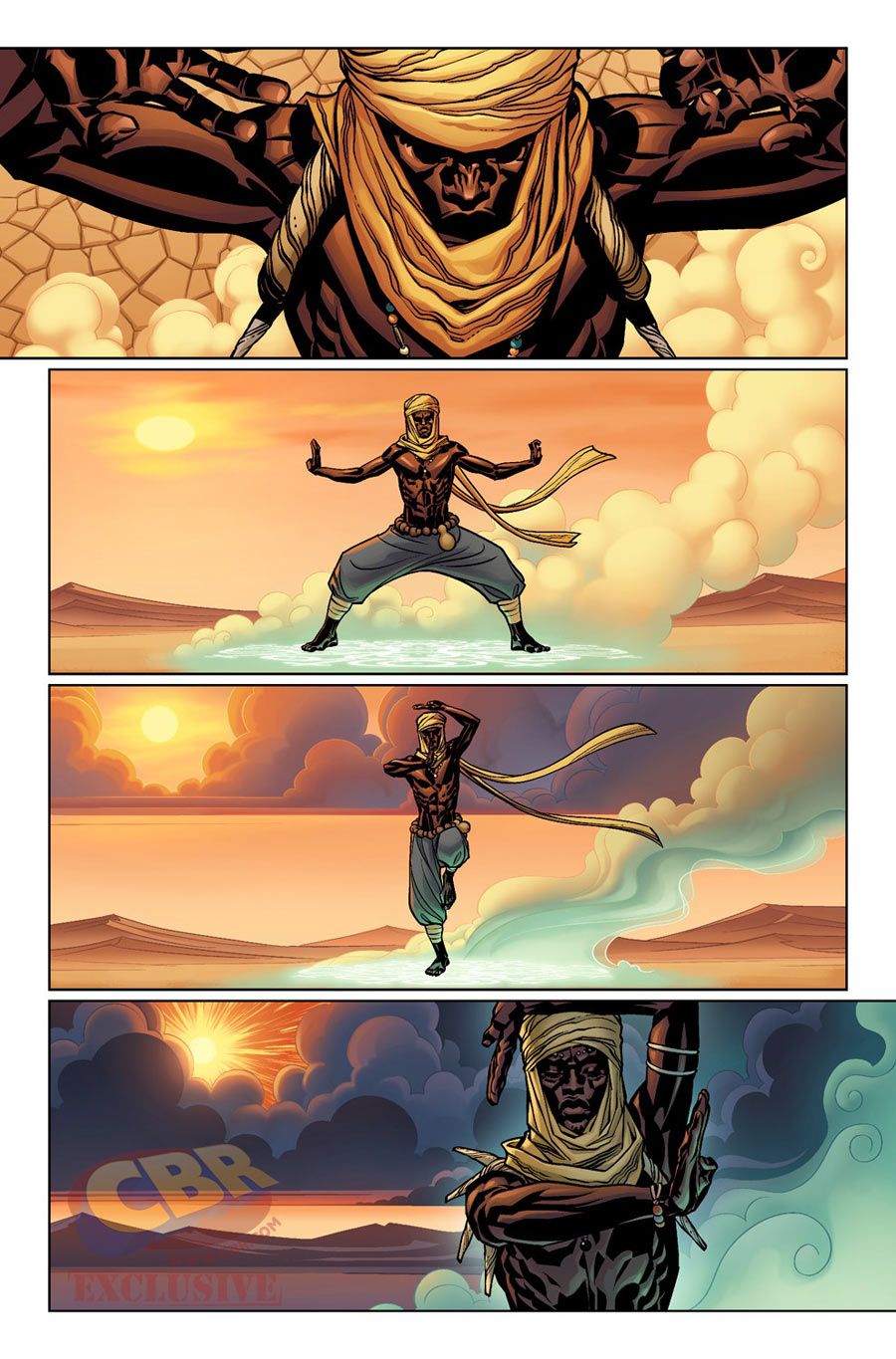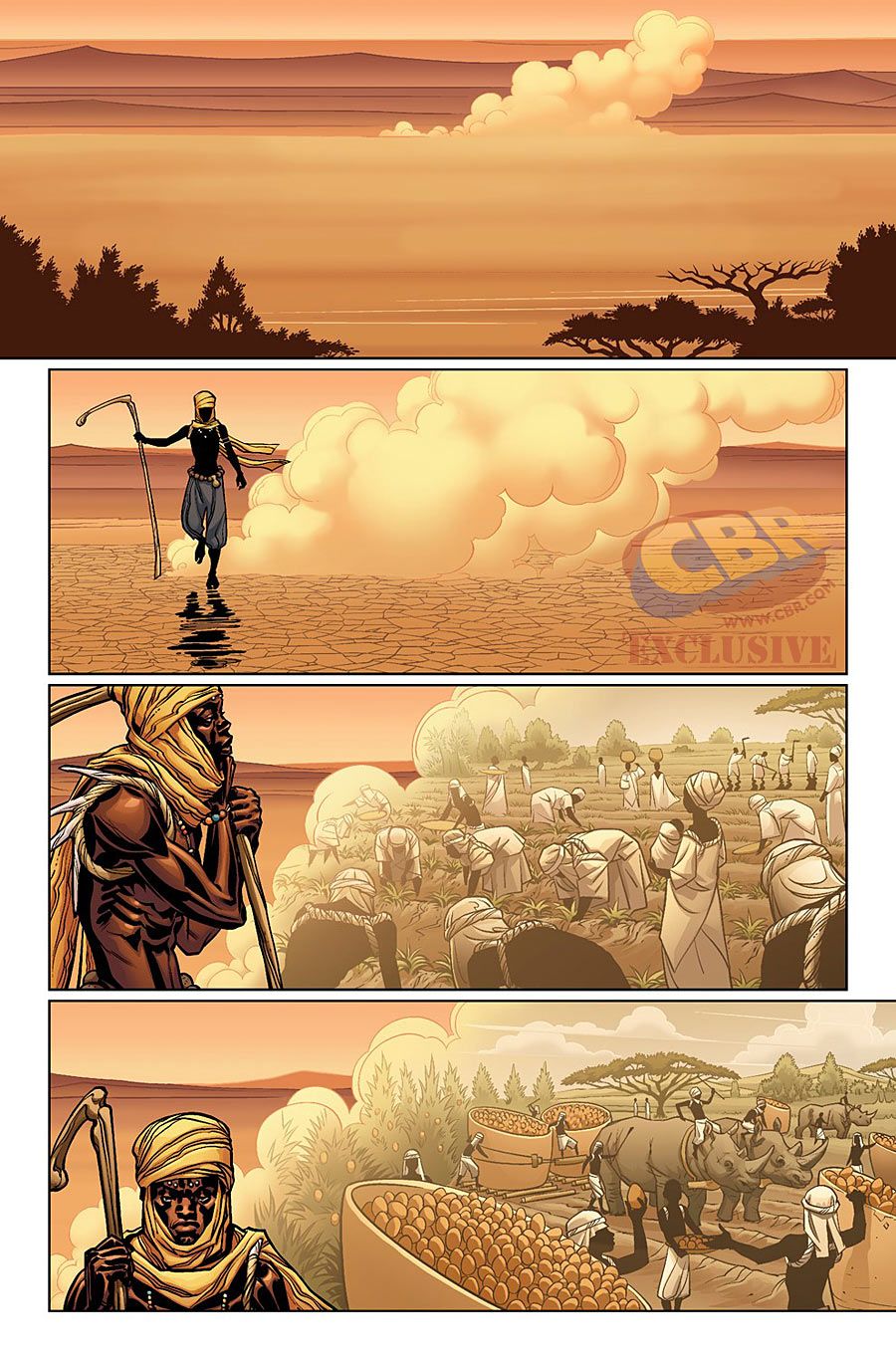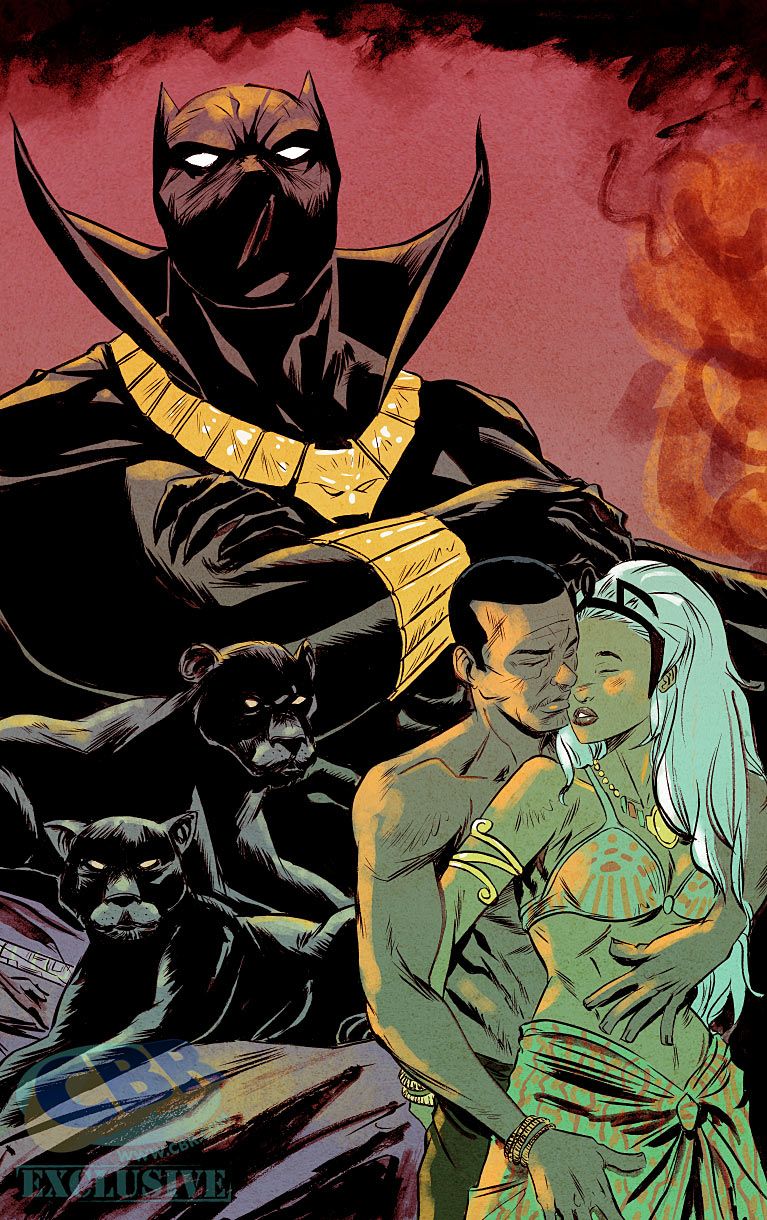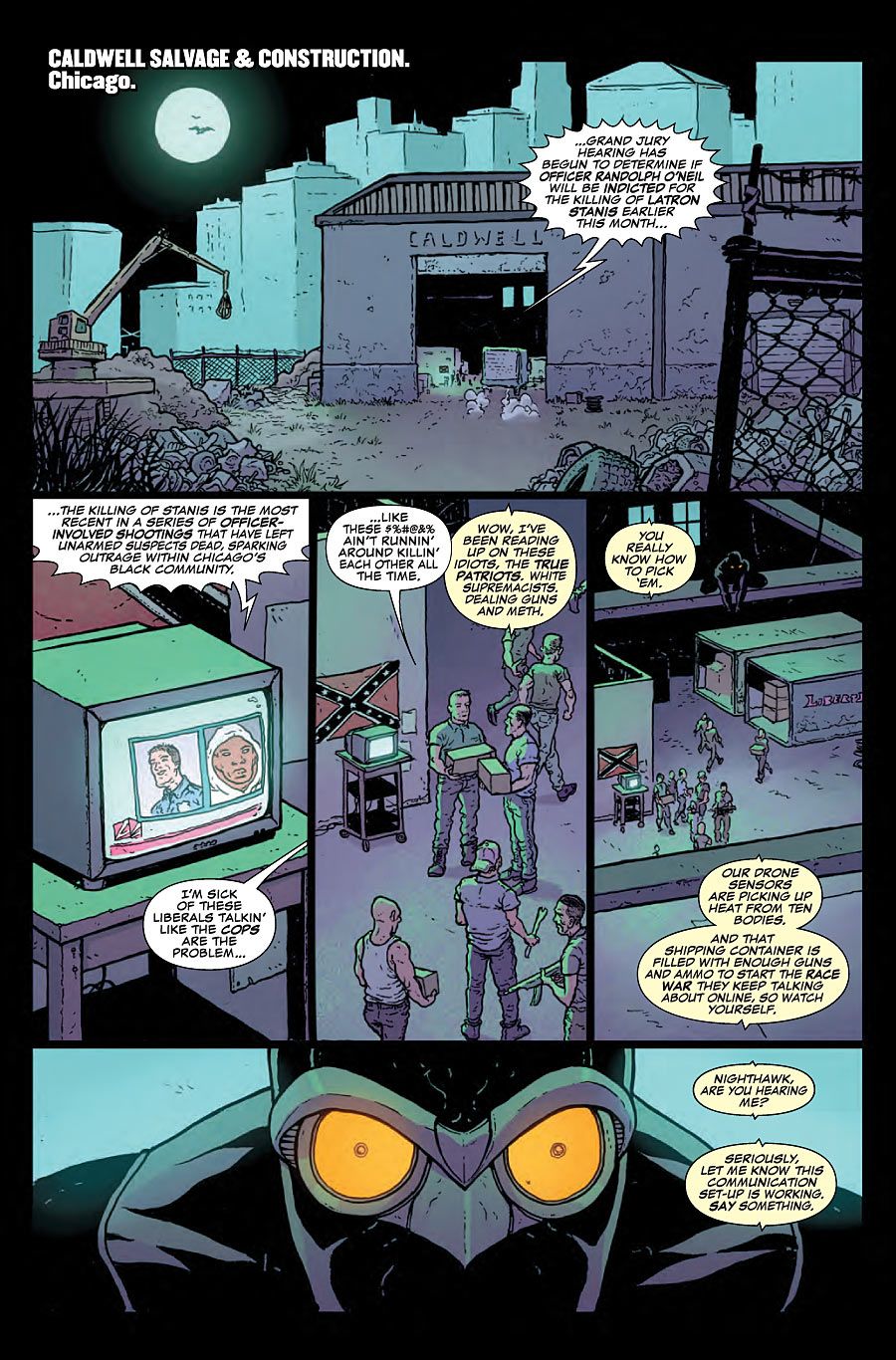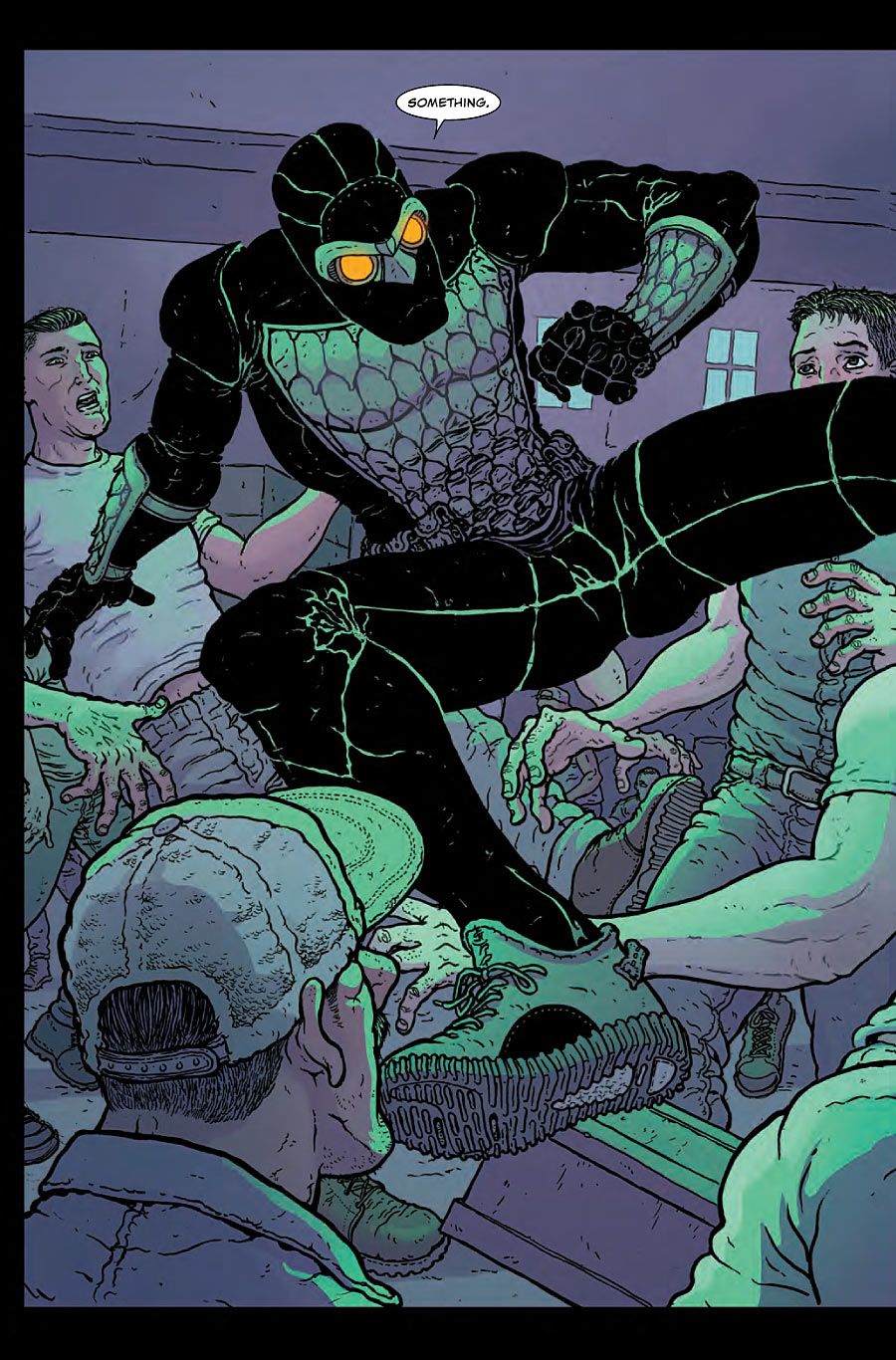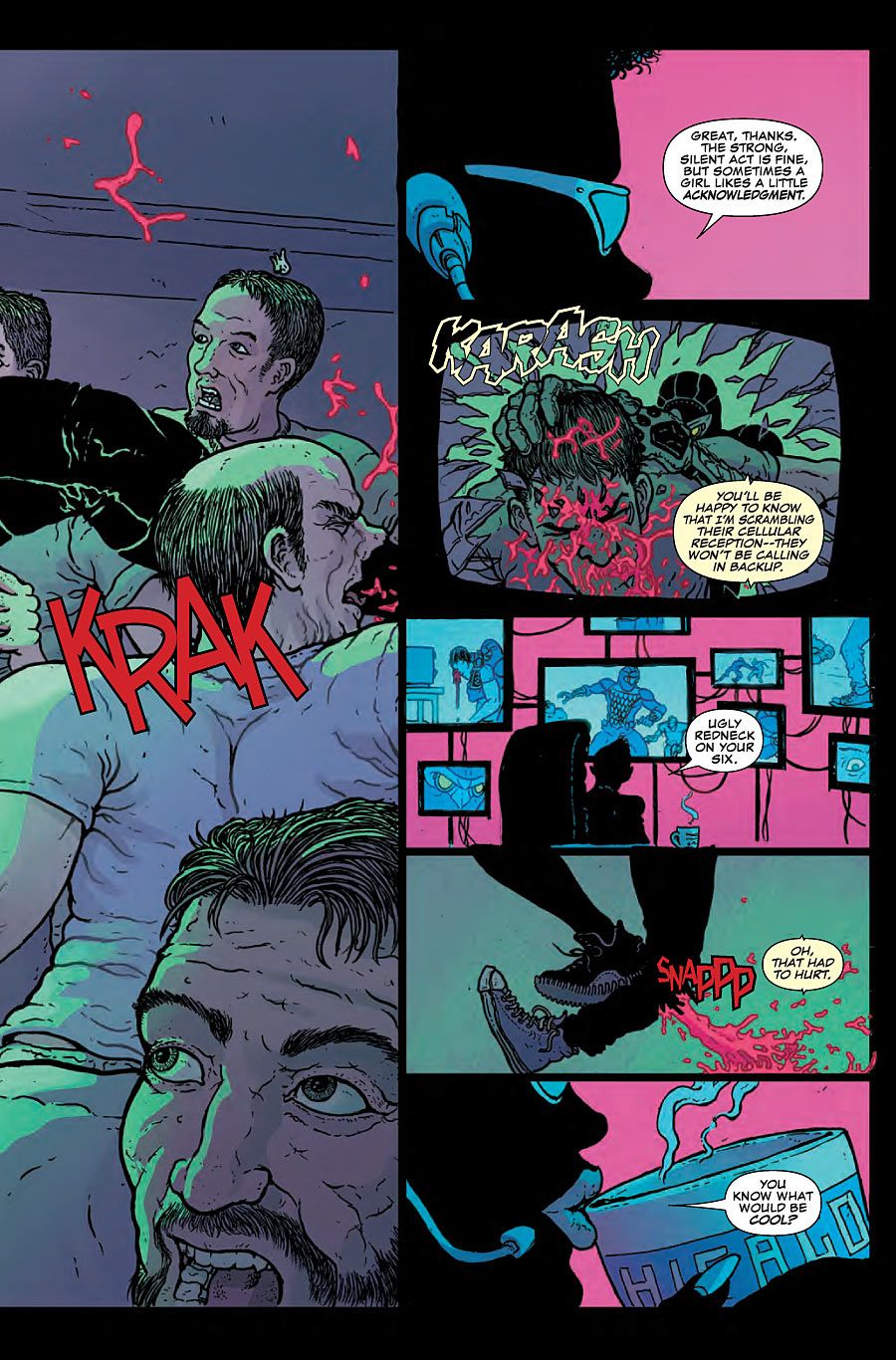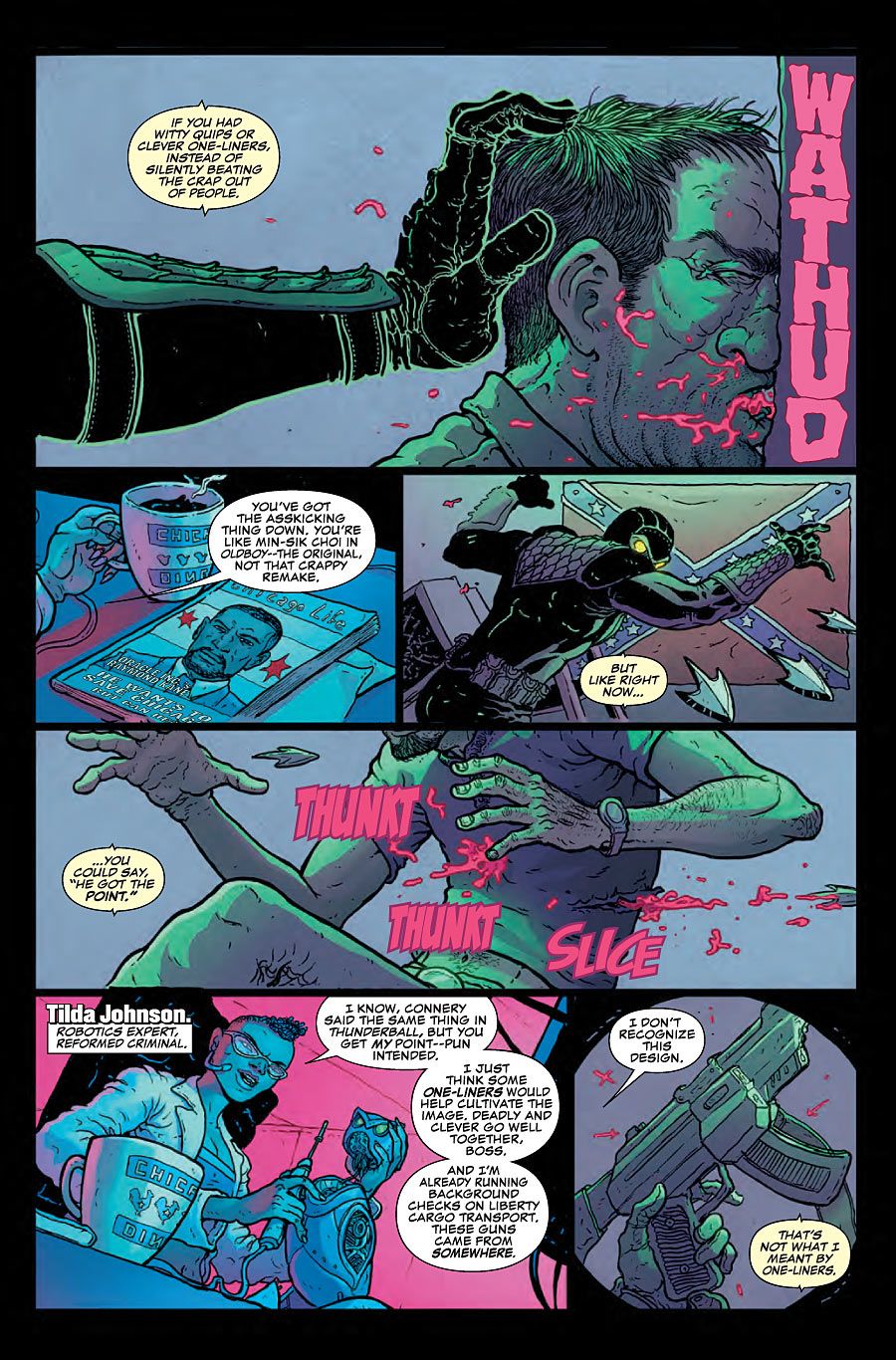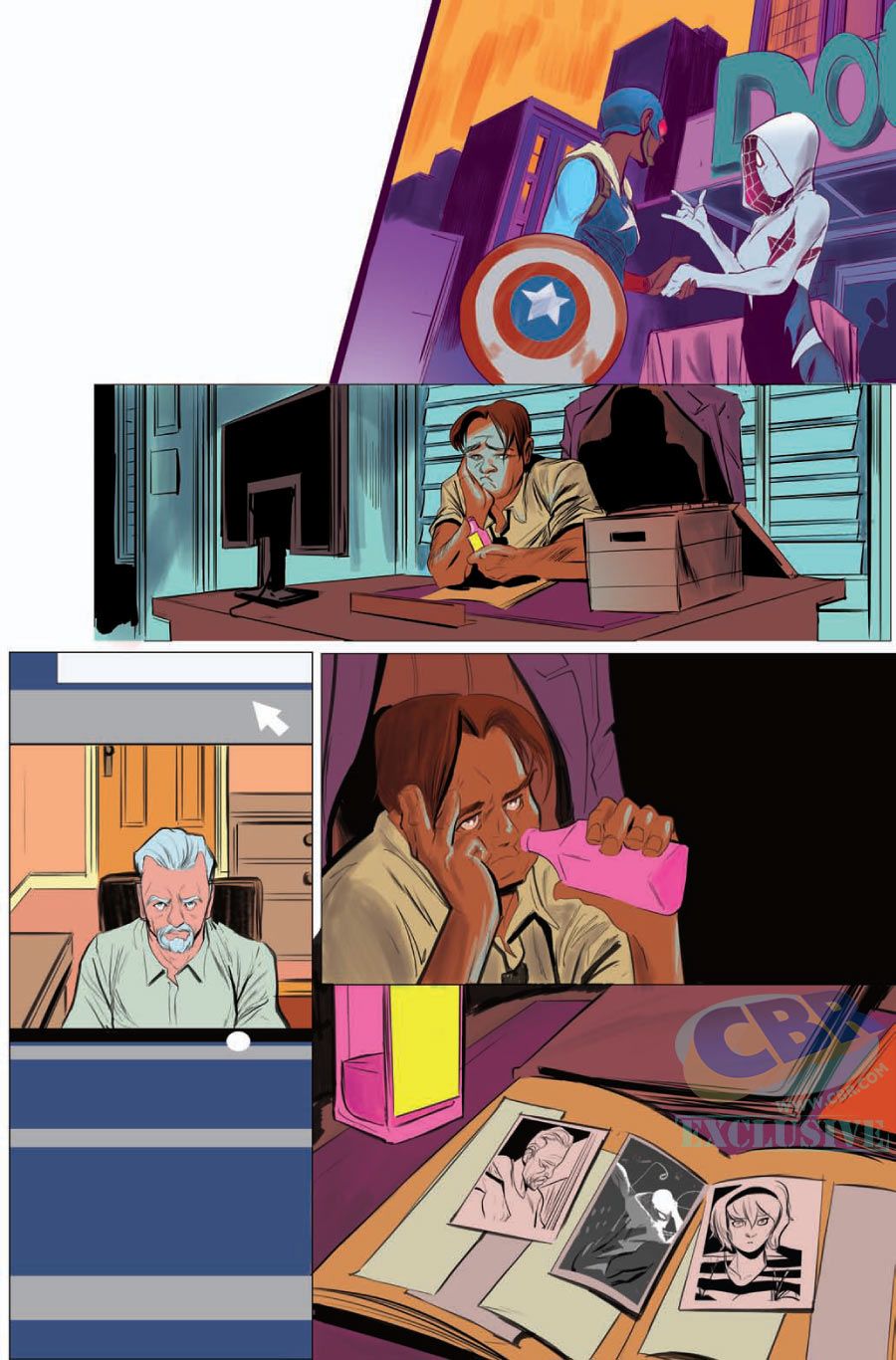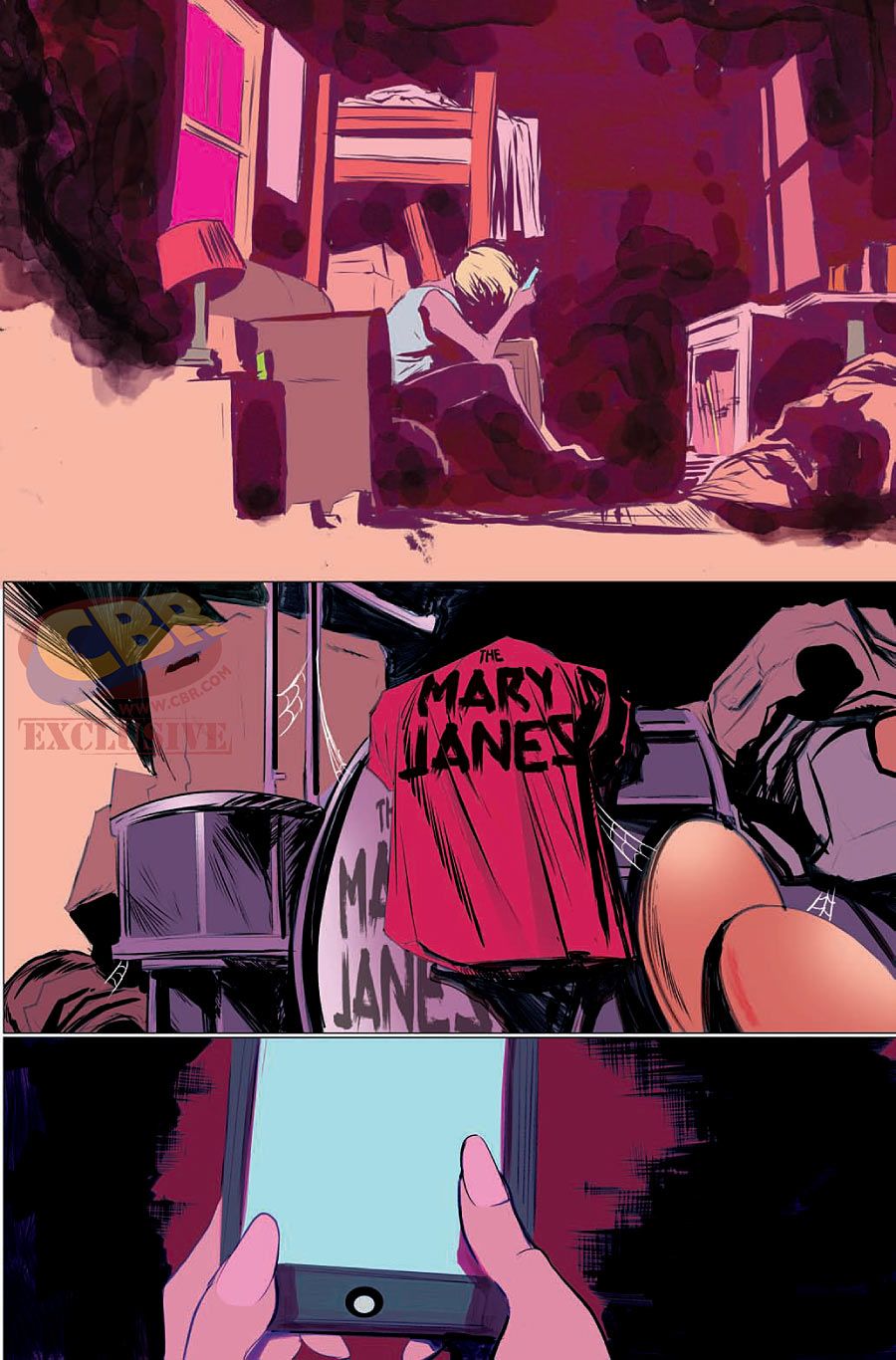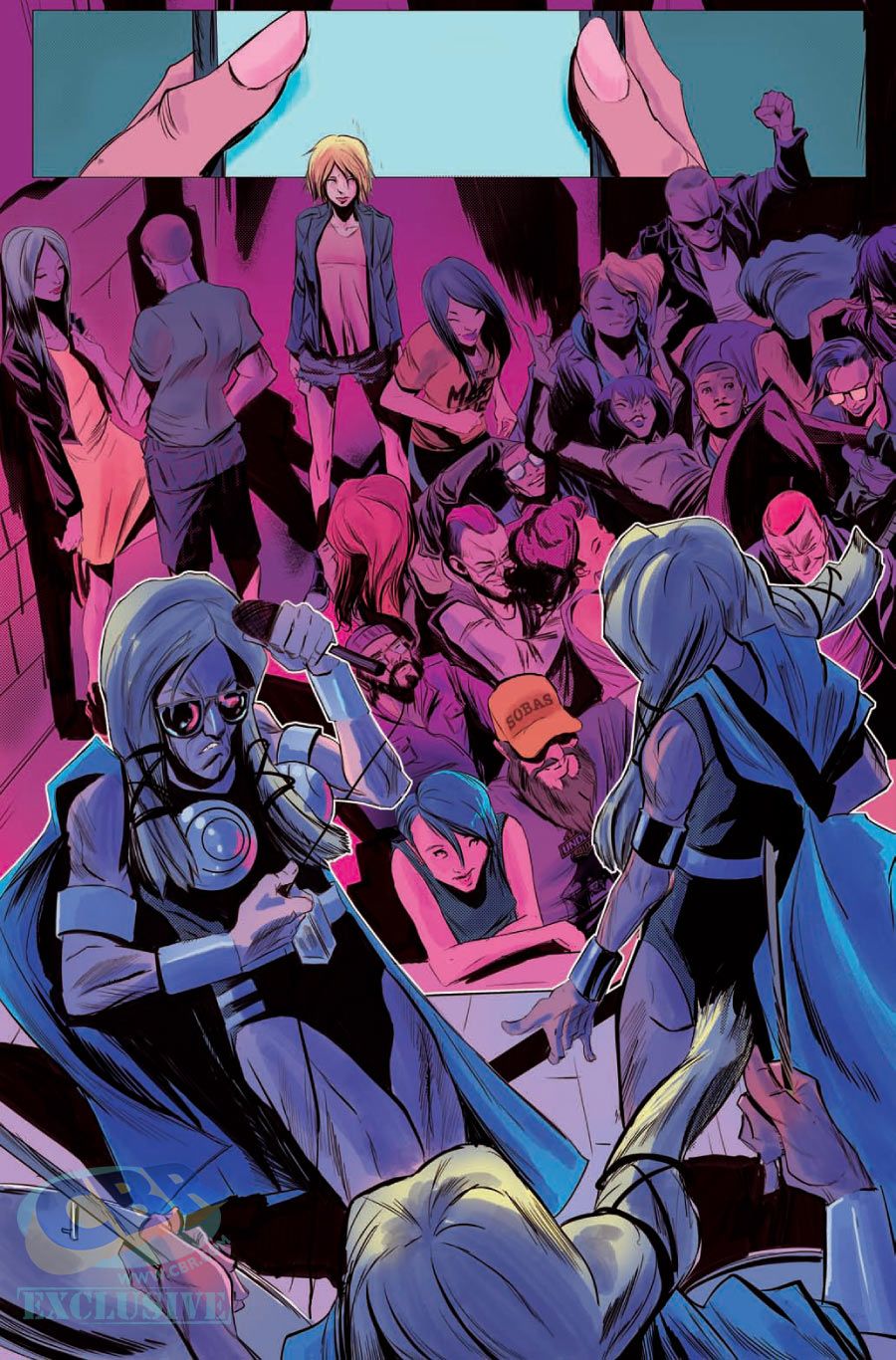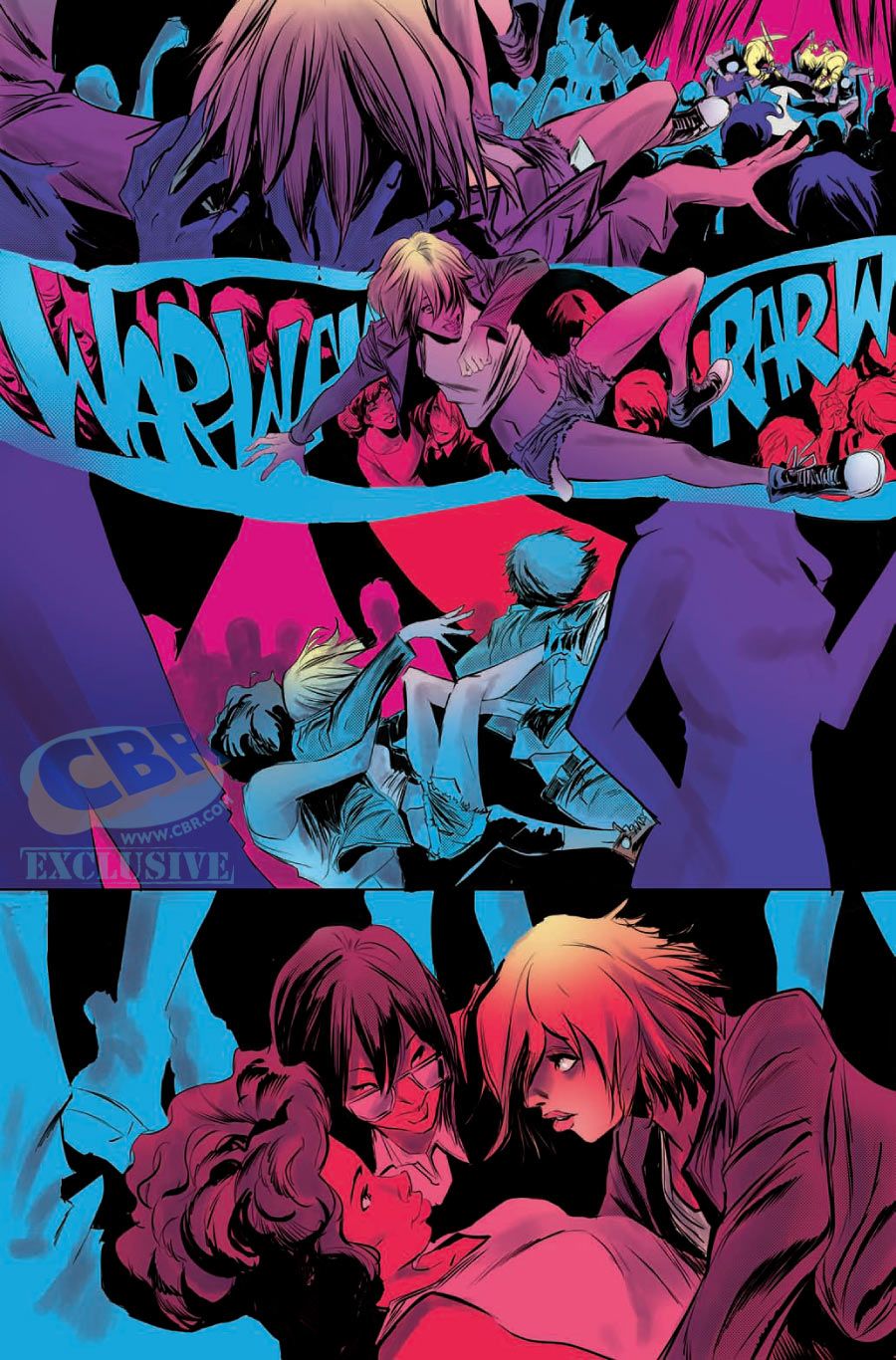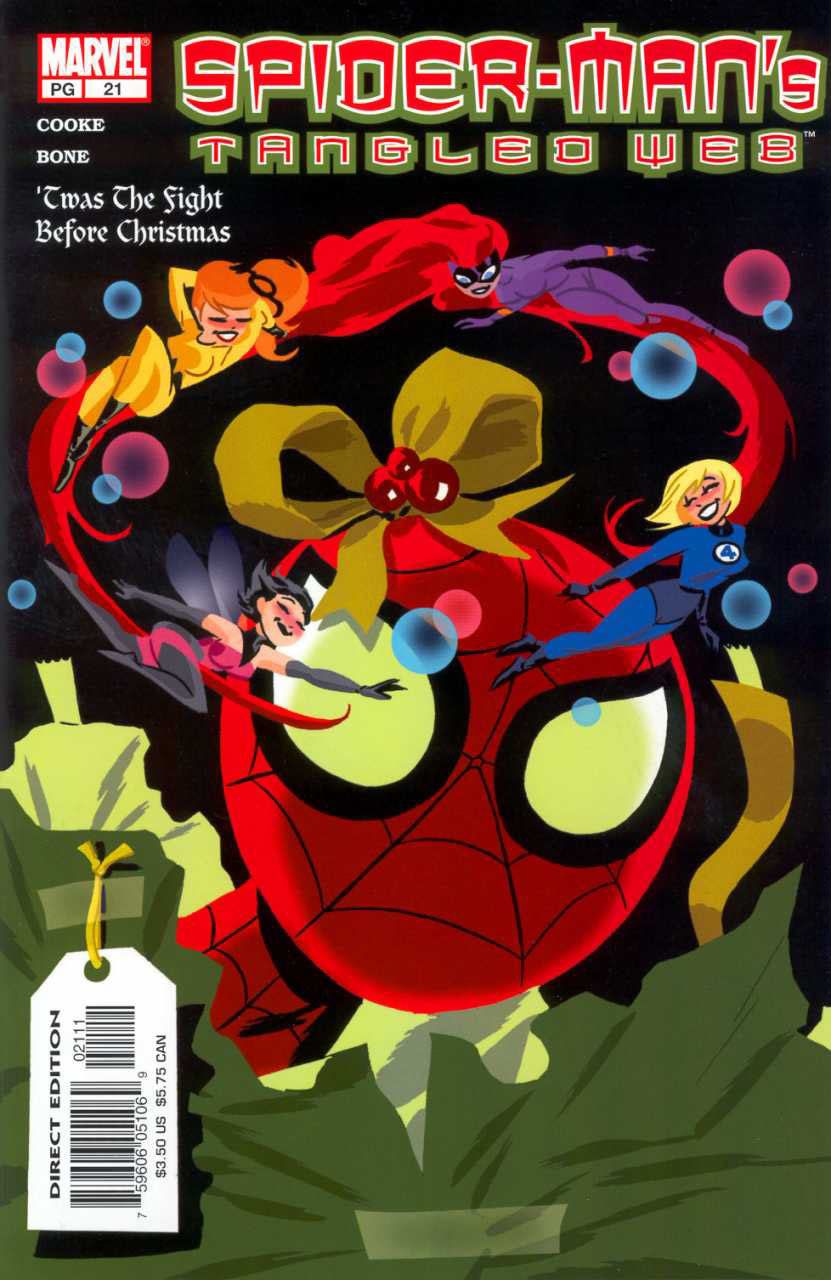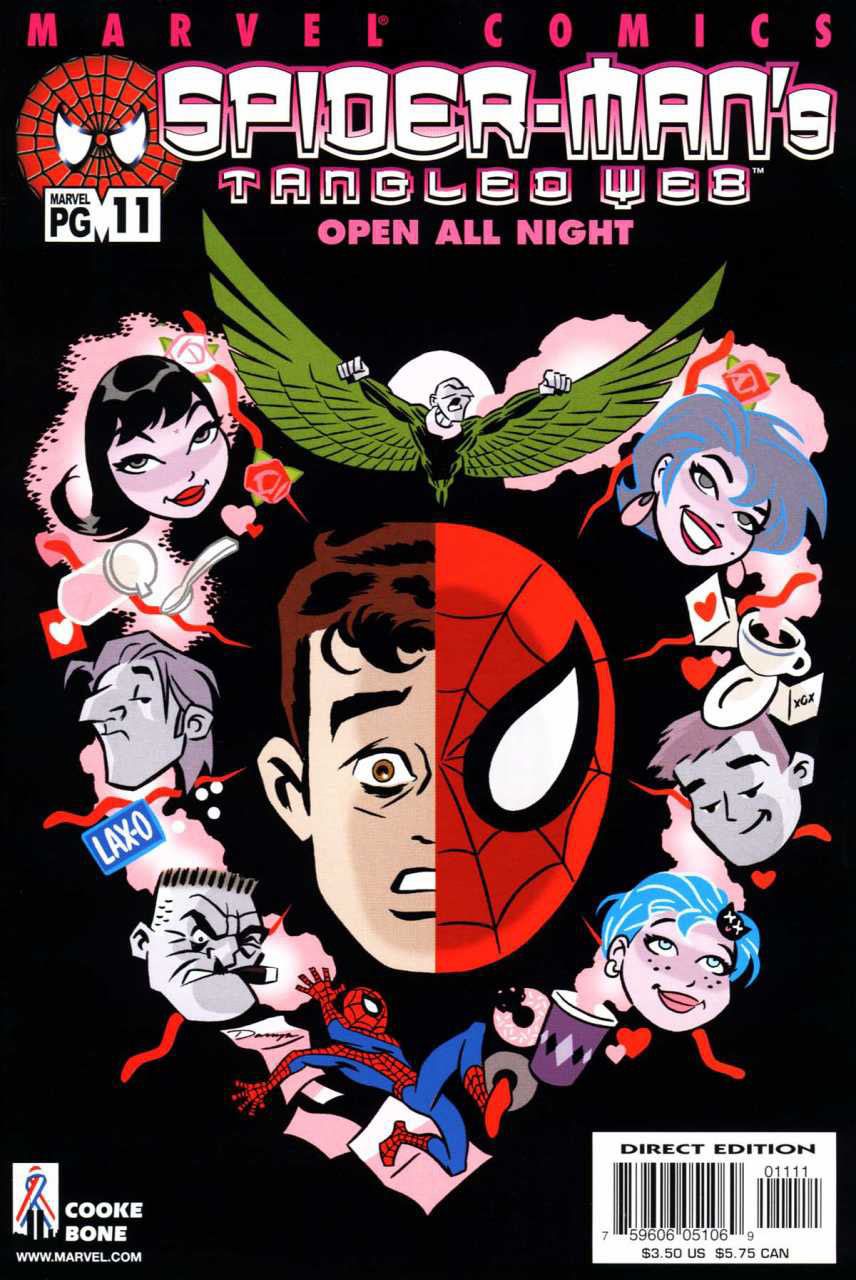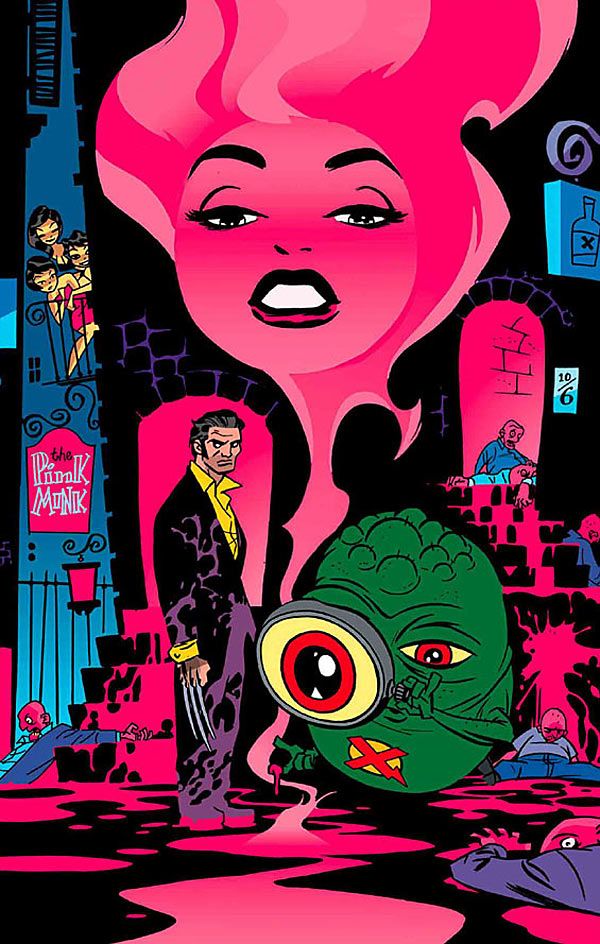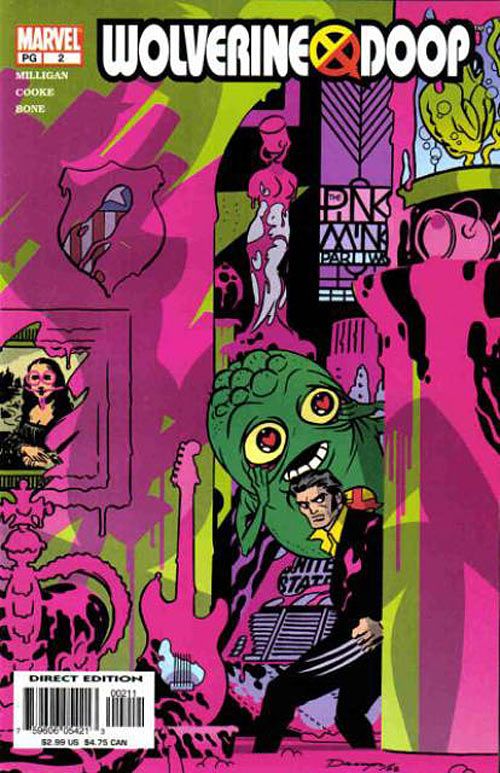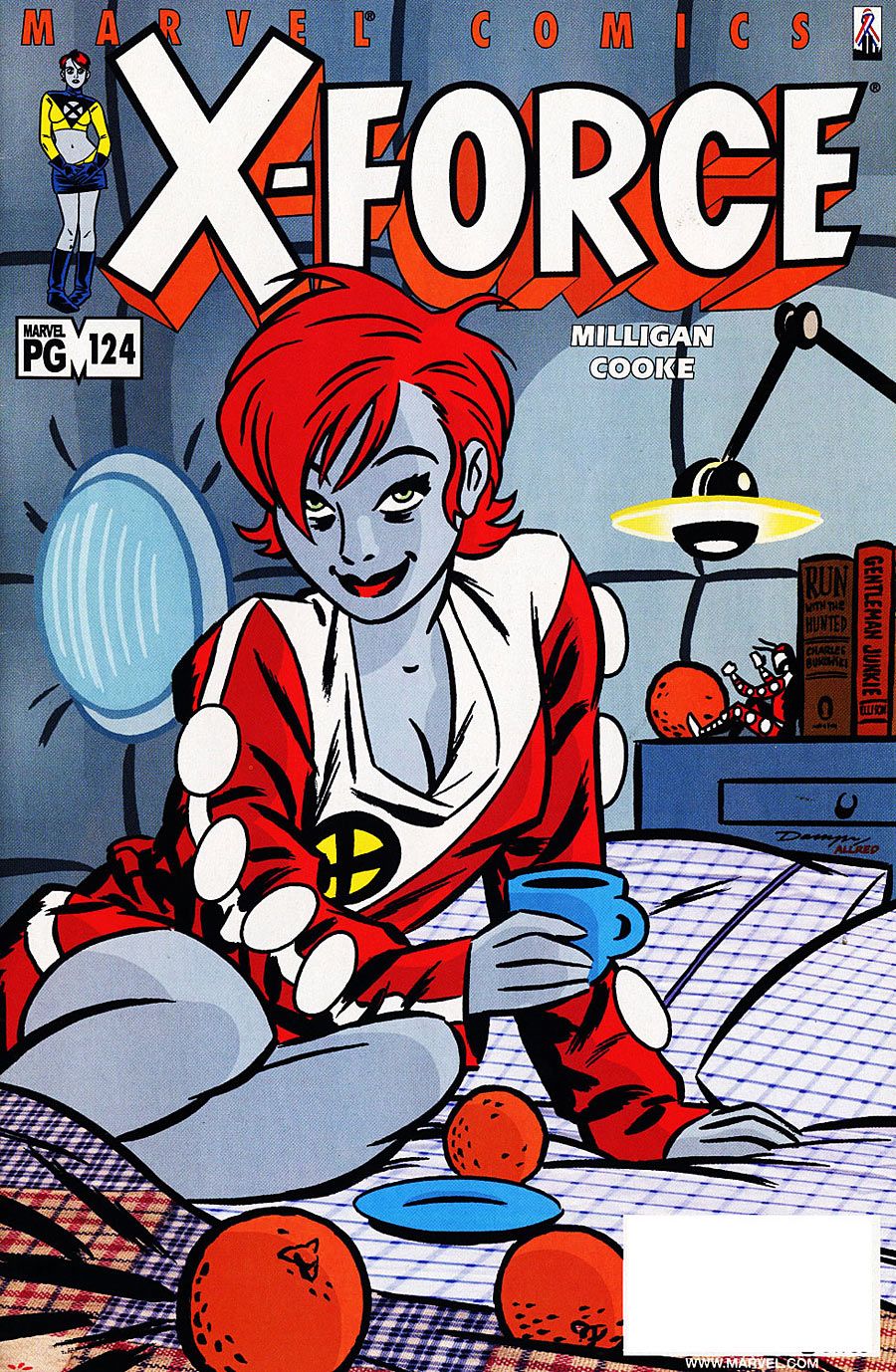Fridays on CBR mean Axel's In Charge.
Welcome to MARVEL A-I-C: AXEL-IN-CHARGE, CBR's regular interview feature with Marvel Comics Editor-in-Chief Axel Alonso!
An editor with years of experience in comics receiving both critical acclaim and best-selling status, Alonso stepped into the chair at the top of Marvel's Editorial department and since then has been working to bring his signature stylings to the entire Marvel U. Anchored by regular question and answer rounds with the denizens of the CBR Community, each week Alonso will shake things up with special guest stars, exclusive art reveals and more!
RELATED: "Agents of SHIELD's" "Squadron Supreme" Easter Egg Could Change the Marvel Cinematic Universe
This week, Alonso gives his insight into how the recently released "Civil War II" #0 by Brian Michael Bendis and Olivier Coipel fits into the larger picture of the event story, and specifically praises the real-world relevance of the monologue delivered in the issue by She-Hulk. Talk also turned to next week, with two new series debuting, one starring one of Marvel's biggest icons -- "Captain America: Steve Rogers," by Nick Spencer and Jesus Saiz -- and one featuring a character Marvel sees as one on the rise; "Nighthawk" from David Walker and Ramon Villalobos. Also, Alonso shares his thoughts on the tragic passing of celebrated cartoonist Darwyn Cooke, who worked on "Wolverine/Doop," "X-Force" and "Spider-Man's Tangled Web" during his short time at Marvel.
Albert Ching: Axel, are you feeling a little more confident after Wednesday night's game, with the Golden State Warriors tying the NBA Western Conference Finals 1-1 at home against Oklahoma City?
Axel Alonso: I am. I like the Thunder. If they weren't playing against the Warriors, I'd be rooting for them. But they are, so... [Laughs] The West has been fun to watch this year, but the East is a snooze. No drama. For six straight years, LeBron has waltzed to the Finals with a handpicked team against a mediocre Eastern conference -- no Spurs, Thunder or Clippers, and I'd throw Portland in there, too. Meanwhile, the West is straight-up war.
Moving to Marvel matters -- this week saw the release of "Civil War II" #0 from Brian Michael Bendis and Olivier Coipel, the second "Civil War II" prelude story after the Free Comic Book Day issue released earlier this month. It's a much quieter story than that one, setting the table for what's to come and taking advantage of some of Bendis' strengths -- character work and dialogue. How do you view the importance of this issue within the larger picture of "Civil War II"?
Alonso: It's important and it touches upon some of the issues we're going to be exploring in this event, issues that are extremely relevant to the society we are building for ourselves. The soliloquy She-Hulk delivers in the opening is something I hope readers hear and reflect on. What she says about "free speech" and "free thought" is one of a few themes that will weave through the story.
Clearly, that's an important part of the story's aim -- real world relevance. Also there's some curiosity about where everything take place, in that obviously this book happens before the Free Comic Book Day story. Will it all be clear by the time #1 comes out?
Alonso: It will all become clear. That said, if you pick up "Civil War II" #1, and you happened to have missed either of these books, you will have no problem getting into the story. "Civil War II" #0 and the Free Comic Book Day issue both offer deep-dives into the story, a preamble or warm-up for the big fight. [Laughs].
Let's chat about a couple books for next week, starting with "Captain America: Steve Rogers" #1, which reunites Steve with the costume and shield -- a new costume and new shield, specifically. For you, what's personally exciting about seeing Steve Rogers back in that position, after a couple years out of that role -- and now in a different dynamic, with two current Captain Americas and two ongoing series?
Alonso: Two things. First, it's Steve effing Rogers back in the red-white-and-blue costume and carrying the shield -- well, a shield. Second, we now find ourselves in a situation where there are two Captain Americas. What does that mean?
There's something fundamentally different about there being two Captain Americas in the Marvel Universe; it's different from there being, say, two Spider-Men. There's a weight that comes with the symbolism of wearing red, white and blues. And the name Captain America. And the shield. The very idea that there would be two heroes laying claim to that title begs the question, Is there room for two? And if there is, the questions becomes, "How is this going to work?" These are questions we asked -- and answered -- before we committed to bringing Steve back.
To talk more about this series specifically, Nick Spencer have been thriving on the "Captain America: Sam Wilson" book, with some heavy political undertones. Based on the preview alone, this feels like maybe a little bit more of a traditional superhero comic. What sold you on the direction Spencer and Jesus Saiz are taking Steve in?
Alonso: Well, it starts with the creative team. Nick is killing it with "Captain America: Sam Wilson." And he's got a master plan that will unfold across both books in coming months, filled with twists and surprises, one of which will be revealed very soon. All eyes are going to be on Captain America -- both of them -- in the coming year.
There's been a lot of talk over the years about how the Marvel movies have changed the perception and stature of Iron Man, infinitely boosting that character's level of recognition around the world. But Captain America has had a similar boost -- people may have always known the name "Captain America," but now many millions have seen him in action. Given that, do you find it's easier to launch a new "Captain America" series than it was just a few years ago?
Alonso: I do. I think that's the fundamental change in the nature of what we do right now. A few years ago, the average person on the street might have understood the silhouette of Captain America, but they didn't understand what was inside that silhouette: who he is, what he stands for, where he came from, what makes his heart beat, what made him different from other superheroes. Anybody that's been to the movies now has some understanding of that. That's a big thing.
Right -- the idea of the character was well-known, but not necessarily the character itself.
Alonso: You don't have to be a Rhodes Scholar to kind of figure out who Captain America is, based on the costume and the shield. But Marvel heroes are defined by who they are inside the costume, not by their powers and their costume. That's the key difference.
Also out next week is "Nighthawk" #1 from David Walker and Ramon Villalobos. That's not a character that is super well-known, but clearly this is something that Marvel is confident in -- what is it about this character and this take on this character that makes it the right fit for Marvel right now?
Alonso: It starts with the creative team, David Walker and Ramon Villalobos. Nighthawk occupies a unique space. He gives us an opportunity to explore and touch upon issues and themes that might not have an organic connection to other characters. And then there's his M.O.: He's got something in common with the Punisher insofar as he will use lethal force, but unlike Frank Castle, lethal force are a mean to an end -- not the means and the end. Nighthawk isn't looking for vengeance -- he's looking to save something.
In this story, David and Ramon are placing Nighthawk in Chicago and the middle of a simmering race riot that touches upon themes that are, lets just say, topical. Within this context, Nighthawk hunts for a mysterious figure that is executing top-feeders that acquired that power at the clear expense of others. Nighthawk is going to have to ask himself a good, hard question: "Do I want to catch this guy?" That's a question that Spider-Man or Daredevil wouldn't ask; there would be no ambiguity in their response, no hesitation. But for Nighthawk, this guy represents a dark reflection of who he could be.
You mentioned the Punisher -- it also looks like this is going to be a fairly brutal book, not dissimilar to what readers saw a couple weeks ago with Becky Cloonan and Steve Dillon's new "Punisher" #1.
Alonso: It will be. We are pushing the envelope.
It's also the biggest showcase yet for the striking visuals of Ramon Villalobos, getting the spotlight of an ongoing series after his work on "E is for Extinction" during "Secret Wars."
Alonso: He's super, and the color scheme laid down by Tamra Bonvillain is just amazing. I love the palette. It doesn't look like anything else out there. This can be a tough market, but I hope this series finds readers because it it's going to be entertaining and thought-provoking.
To wrap until next Friday, are there any comments you'd like to share on the passing last week of Darwyn Cooke? It occurred to me that pretty much all of his Marvel work was on books that you edited -- his two issues of "Spider-Man's Tangled Web," his "X-Force" issue and the two-issue "Wolverine/Doop" miniseries.
Alonso: Darwyn was a singular talent. A wonderful storyteller who clearly loved a medium that frequently broke his heart. I think that his work on the "Parker" books is amongst my favorite reads of the last several years. His passing is a huge loss for comics and our community.
Have some questions for Marvel's AXEL-IN-CHARGE? Please visit the AXEL-IN-CHARGE Q&A thread in CBR's Marvel Comics community. It's the dedicated thread that CBR will pull questions for next week's installment of our weekly fan-supported question-and-answer column! Do it to it!

